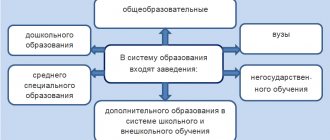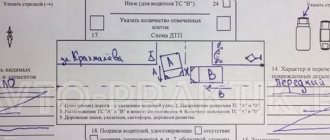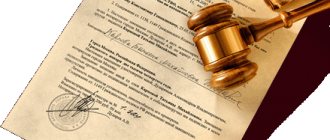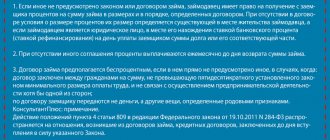The procedure for obtaining a property deduction Documents when purchasing housing in a new building Documents when purchasing a secondary property Documents when purchasing a land plot
In order to return the tax for the purchase of an apartment, you must provide a set of documents to the tax office. This kit may vary for different situations. We will look at the most common options.
Watch the video in which we talk in detail about what a tax deduction is when buying an apartment, who is entitled to the deduction, what documents need to be prepared and how they can be submitted to the tax office.
How to calculate the property deduction and how much personal income tax will be returned to the account - in examples and explanations from experts of the online service NDFLka.ru.
Obligation to report personal income tax
All citizens making a profit in Russia are required to pay personal income tax to the state.
Typically, tax agent organizations are involved in withholding tax and transferring it to the budget. These are the taxpayers' employers or those organizations that paid them income. These same tax agents report to the Federal Tax Service on the amounts paid and the tax withheld from them. But there are citizens who independently calculate the tax and transfer it to the budget. They have an obligation to report to the Federal Tax Service:
- if the taxpayer has the status of an individual entrepreneur and applies the general taxation system;
- if a person received income independently during the year and does not have a tax agent for any transaction.
We tell you how to fill out the 3-NDFL declaration yourself and when to submit it to avoid a fine. This can be done both on paper and electronically.
Read more: how much will you be fined if you fail to submit 3-NDFL in 2021
How to reduce the fine
In case of untimely submission of the 3-NDFL declaration, taxpayers face a fine under paragraph 1 of Art. 119 of the Tax Code of the Russian Federation. The amount of the fine on a declaration with income without payment is 1,000 rubles. or 5% of the unpaid amount for each day of delay, but not more than 30% of this amount and not less than 1,000 rubles.
Until 2021, a taxpayer could not be fined if the return was not submitted to the tax office. From 2021, if a 3-NDFL declaration is not submitted, the tax office will simply conduct a desk audit without it and will add an additional fine based on the cadastral value of the housing. When selling, the income will be the transaction price or 0.7 of the cadastral value (whichever is greater in amount). When donating, the cadastral value of the property will be considered income.
The amount of the fine can be reduced by at least two times (or more) if there is at least one mitigating circumstance. The list of mitigating circumstances is not exhaustive: the more there are, the less the fine may be.
The minimum fine of 1,000 rubles can also be reduced. The list of mitigating circumstances is given in Art. 112 of the Tax Code of the Russian Federation:
- committing an offense due to a combination of difficult personal or family circumstances;
- committing an offense under the influence of threat or coercion or due to financial, official or other dependence;
- difficult financial situation of an individual held accountable for committing a tax offense;
- other circumstances that may be recognized by the court or tax authority considering the case as mitigating liability.
The last point may include the following:
- committing such an offense for the first time;
- the presence of minor children or children under 24 years of age who are in full-time education;
- advanced (retirement) age;
- minor period of non-submission of a declaration or non-payment of tax (from 1 to 10 days);
- repentance and admission of guilt;
- lack of intent to commit a violation.
The more mitigating circumstances are indicated in the petition, the greater the chance of reducing the amount of the fine by more than half.
New declaration form for the 2021 report
The Federal Tax Service of Russia published Order No. ED-7-11/ [email protected] dated August 28, 2020, which approved a new form of personal income tax declaration (3-NDFL). The document came into force on 01/01/2021, which means that the updated form must be applied from the report for 2020. The changes are related to the possibility of making an advance quarterly personal income tax payment by individual entrepreneurs (IP), lawyers and notaries.
Section 1 in the updated form was divided into two parts:
- To indicate information about the amounts of tax subject to payment (additional payment) to the budget (except for the amounts of tax paid in accordance with clause 7 of Article 227 of the Tax Code of the Russian Federation) or refund from the budget.
- To indicate the amounts of the advance payment for personal income tax paid in accordance with clause 7 of Art. 227 Tax Code of the Russian Federation.
New sheets have been added to the declaration:
- appendix to section 1 “Application for offset (refund) of the amount of overpaid personal income tax”;
- calculation to Appendix 3 “Calculation of advance payments paid in accordance with clause 7 of Art. 227 of the Tax Code of the Russian Federation."
Use ConsultantPlus instructions for free
Tax employees were prohibited from correcting errors in reporting forms. Now the entire package of documents is being returned without explanation. And for delay you will be punished with a fine. We have put together instructions that will help you fill out 3-NDFL correctly and pass it the first time:
- new form 3-NDFL;
- instructions for filling out a report for individual entrepreneurs;
- how to fill out and submit electronically through the tax website;
- rules and deadlines.
What is the 3-NDFL declaration
The declaration form and instructions for filling out 3-NDFL were approved by order of the Federal Tax Service of Russia No. ED-7-11 / [email protected] dated 08/28/2020. This is a lengthy report of 13 pages, which includes a traditional title page and two main sections. The first section is only one page long and must be completed by all respondents. The second section, together with applications (the number of which takes 9 pages, but they are filled out only if there is information that should be indicated in them, depending on the status of the taxpayer.
This is a lengthy report of 13 pages, which includes a traditional title page and two main sections. The first section is only one page long and must be completed by all respondents. The second section, together with applications (the number of which takes 9 pages, but they are filled out only if there is information that should be indicated in them, depending on the status of the taxpayer.
The personal income tax return is an annual reporting form. It is intended not only to inform the Federal Tax Service about income received for the purpose of paying tax on them, but also for possible receipt of tax deductions.
Main deductions claimed on the declaration
Residents of the Russian Federation who receive taxable income at a rate of 13% can claim tax deductions. That is, working citizens. The maximum amount that can be returned for a year is the amount of tax paid for the same year according to the 2-NDFL certificate. The deadline for submitting a declaration with the claimed deductions is not established and is limited to only three years.
Taxpayers have the opportunity not to wait until the end of the tax period, but to provide notice to their employer so that personal income tax is not withheld from their salary this year. To do this, you need to contact the tax office with the entire package of supporting documents, depending on the deduction.
After checking the documents in a month, the tax authority will prepare you a notice that must be submitted to the employer.
Who submits 3-NDFL
When receiving income on which it is necessary to calculate and pay personal income tax, or to receive a refund of part of the tax previously paid to the budget, a declaration to the Federal Tax Service is required. As required by the Tax Code of the Russian Federation, at the end of the year the report is submitted to:
- Individual entrepreneurs (IP) on the general taxation system.
- Lawyers and notaries who have established private offices.
- Heads of farms (peasants).
- Tax residents of the Russian Federation who received income in other countries in the reporting year (these are persons who actually resided in Russia for at least 183 days a year, but received funds from foreign sources outside its borders).
- Citizens who received income from renting out their property or from fulfilling GPC agreements (provided that the customer did not fulfill the duty of a tax agent). In addition, a tax return for personal income tax (form 3-NDFL) is submitted upon sale of property. Although it is mandatory to declare receipt of income in this case, tax will have to be paid provided that the taxpayer owned it for less than the established minimum period (three years). As for real estate, you must pay income tax when selling an apartment (house):
- owned for less than 5 years, if acquired after 01/01/2016;
- owned for less than 3 years, if the property was purchased before 01/01/2016 or received by inheritance, as a gift, under a lifelong maintenance agreement with a dependent, as a result of privatization.
Citizens who win the lottery or sports betting also pay tax on the amount of their winnings, but in relation to them the tax agents are the organizers of these promotions and drawings, who paid them the amount of the winnings. If the gift is received in kind, the winner must pay tax on it themselves. In this case, he should fill out and submit the report.
How to reduce the payment in the declaration
When selling property before the expiration of the minimum period of ownership, the seller must fill out and submit a 3-NDFL declaration, and you can reduce the amount of tax by applying one of the deductions:
- the amount of actual expenses incurred related to the acquisition of this property, which must be documented: costs of acquisition, construction of real estate, mortgage interest (clause 2, clause 2, article 220 of the Tax Code of the Russian Federation);
- property deduction in the amount of 1 million rubles. when selling residential houses, apartments, rooms, garden houses, land plots (shares in listed real estate) or in the amount of 250,000 rubles. – when selling other real estate (for example, a car, a garage). This deduction is applied if expenses cannot be documented, for example, in a gift agreement (clause 1, clause 2, article 220 of the Tax Code of the Russian Federation).
Thus, the sale of real estate worth up to 1 million rubles, as well as other property worth up to 250,000 rubles. is non-taxable.
An example of applying a deduction of 1 million rubles.
Modestov inherited an apartment in 2021 with a cadastral value of 3 million rubles. and decided to sell it that same year. The sale takes place before the minimum ownership period and there are no documented acquisition costs.
In this case, you can take advantage of a property deduction in the amount of 1 million rubles. The amount to be paid will be: RUB 260,000. = (3 million rubles – 1 million rubles)*13%
Example of using a deduction with confirmed expenses
Korablev bought an apartment in 2021 for 4.5 million rubles. and sold in 2020 for 4.2 million rubles, the cadastral value is 4.3 million rubles. Since the amount of expenses actually incurred is greater than the sum of the sale and the cadastral value, no tax will be payable in the declaration.
When selling property, an important indicator is its cadastral value. So, if the value of the property under the contract is less than 0.7 of the cadastral value, then the tax will have to be calculated based on the cadastral value.
Example calculation with cadastral value
Smirnov bought an apartment in 2021 for 3 million rubles. I sold an apartment in 2021 for 3 million rubles, the cadastral value of the apartment is 6 million rubles.
Although the amount of expenses actually incurred and the amount of income are the same and amount to 3 million rubles, tax will have to be paid, since the cadastral value is twice the actual value.
The amount to be paid will be: RUB 156,000. = (6 million rubles * 0.7 reduction factor - 3 million rubles (costs)) * 13%
Deadline and methods for submitting the report
The general deadline for submitting an income statement for an individual is April 30 of the year following the reporting year.
IMPORTANT!
For 2021, you must report by 04/30/2021. This applies to individual entrepreneurs and ordinary citizens who have such an obligation.
The report is sent to the tax service at the place of registration of the taxpayer in three ways:
- directly to the Federal Tax Service inspection in person or through a representative;
- by mail;
- online on the tax service website or using special services.
The deadline applies only to individual entrepreneurs, lawyers, heads of peasant farms, notaries and citizens declaring income.
IMPORTANT!
In order to receive a tax deduction, the declaration must be submitted at any convenient time.
Features of the declaration
When filling out the reporting form, you must not make mistakes or corrections. Only black or blue ink may be used if the form is completed by hand. Please note that the filling instructions are based on different requirements for manual and machine completion of the form:
- When filling out the form by hand, all text and numerical fields (full name, tax identification number, amounts, etc.) should be written from left to right, starting from the leftmost cell, in capital printed characters according to the model found on the Federal Tax Service website. Try to make the letters as similar as possible to the sample. If after filling out the line there are empty cells left, they should be filled with dashes to the end of the field. If any field is empty, dashes are placed in all its cells.
- When formatting on a computer, all numeric values must be aligned to the right. It is recommended to use only the Courier New font with a size set between 16 and 18.
If one page of a section or form sheet is not enough, use the required number of additional pages from the same section.
Both in handwritten and printed versions of the report, all amounts are indicated in kopecks. The exception is the amount of the tax itself, which must be rounded to full rubles according to the usual arithmetic rule: if the amount is less than 50 kopecks, then they are discarded, starting from 50 kopecks and above, they are rounded to the full ruble. Income or expenses that are calculated in foreign currency according to documents must be converted into rubles for inclusion in the report at the exchange rate of the Central Bank of the Russian Federation on the date of their actual receipt. The information provided in the declaration is confirmed by documents, copies of which are attached to the declaration. To list the documents attached to the 3-NDFL, a register is compiled in any order.
All pages of the form are numbered in order by filling in the “Page” field. starting from 001 (title page). The number of pages is indicated on the title page, as is the number of additional documents.
IMPORTANT!
Appendix 5 to the Order of the Federal Tax Service No. ММВ-7-11/ [email protected] dated 10/03/2018 lists activity codes.
Other applications give:
- codes of income from sources in the Russian Federation and located outside the country (note what type of income to indicate in 3-NDFL for tax deduction, this is important for approval of the operation);
- object name codes (for example, apartment or land plot);
- codes of the type of taxpayer claiming a tax deduction;
- transaction type codes.
The procedure for filling out a report for individual entrepreneurs
Let us examine in detail how to fill out the 3-NDFL declaration for an individual entrepreneur.
Title page
In the “TIN” paragraph on the title and all other sheets, indicate the correct identification number of the respondent taxpayer. If the report is submitted for the first time, then in the column “Correction number” you should indicate 000, and if a revised document is submitted again, then the serial number of the correction should be entered in this column. In the column “Tax period (code)” the code of the reporting period is entered; for annual reporting this is code 34. If the declaration is not submitted for a year, then indicate the following values:
- first quarter - 21;
- half-year - 31;
- nine months - 33.
The “Reporting tax period” field is intended to indicate the year for which income is declared. In addition, the column “Provided to the tax authority (code)” should be filled out correctly. It contains the four-digit number of the tax authority with which the taxpayer is registered. In this code, the first two digits are the region number, and the last two are the Federal Tax Service inspection code.
An important field that you should pay attention to when preparing the title page is the taxpayer category code. All values used are given in Appendix No. 1 to the procedure for filling out the report. Here are some of them:
- IP - 720;
- notary - 730;
- lawyer - 740;
- individuals without individual entrepreneur status - 760;
- farmer - 770.
The taxpayer provides the following information about himself: last name, first name, patronymic, date of birth (full), place of birth (as recorded in the passport), details of the passport itself. You no longer need to provide your permanent address of residence.
Identity documents have their own coding system, which is given in Appendix No. 2 to the procedure for filling out the reporting form:
- passport of a citizen of the Russian Federation - 21;
- birth certificate - 03;
- military ID - 07;
- temporary certificate issued instead of a military ID - 08;
- passport of a foreign citizen - 10;
- certificate of consideration of an application to recognize a person as a refugee on the territory of the Russian Federation - 11;
- residence permit in the Russian Federation - 12;
- refugee certificate - 13;
- temporary identity card of a citizen of the Russian Federation - 14;
- temporary residence permit in the Russian Federation - 15;
- certificate of temporary asylum in the Russian Federation - 18;
- birth certificate issued by an authorized body of a foreign state - 23;
- ID card of a Russian military personnel, military ID of a reserve officer - 24;
- other documents - 91.
The “Taxpayer Status” field is intended to indicate residence; the number 1 in it means that the taxpayer is a resident of the Russian Federation, and the number 2 means a non-resident of the Russian Federation. Also on the title page indicate the total number of sheets in the report, put a signature and the date of its completion.
If the report is submitted through a representative, then his full data must be indicated. In addition, such a person must attach to the declaration a copy of a document confirming his authority.
Other sheets
Of the remaining sheets, the taxpayer fills out those that contain information. It is only obligatory for everyone to fill out Section 1 “Information on the amounts of tax subject to payment (addition) to the budget / refund from the budget.” It provides relevant data on the amount of personal income tax or deduction.
When filling out this section, pay attention to the correct BCC for tax payment and its type. Please note that the surname and initials should be indicated on each page, as well as its serial number.
Let's consider an example of filling out a 3-NDFL declaration by an individual entrepreneur using the general taxation system. The individual entrepreneur fills out the title page of the declaration and section 1. In addition, he fills out section 2, appendices 1, 3 and 8. This individual entrepreneur in 2021 received income from business activities in the amount of 1,880,000 rubles.
In addition, he has the right to apply a professional tax deduction in the amount of 1,370,000 rubles. It included:
- material costs - 670,000 rubles;
- payments under employment contracts - 530,000 rubles;
- other expenses - 170,000 rubles.
For 2021, the individual entrepreneur transferred 35,000 rubles in advance payments for personal income tax to the budget. The entrepreneur is a participant in an investment partnership on the basis of an agreement and received income from the sale of securities that were in his ownership for less than three years.
Next, fill out Appendix 1 “Income from sources in the Russian Federation.” In it, the entrepreneur indicates all sources of income in Russia, their details and amounts.
In a similar Appendix 2, income from sources outside the Russian Federation is indicated, indicating the amounts and full details.
Appendix 3 “Income received from business, advocacy and private practice” contains generalized information on income received from business activities during the reporting period. In our example, this is 1,800,000 rubles.
IMPORTANT!
We indicate the OKVED activity code from which the income was received, the amount and expenses incurred during the reporting period.
Types of tax deductions
Standard tax deductions
Available to certain categories of citizens and parents. In most cases, standard tax deductions are provided by the employer, who does not withhold personal income tax from wages. The deduction can be provided “for yourself” and for children.
Standard tax deduction for yourself
The following preferential categories of taxpayers may receive:
- disabled people;
- combatants, WWII veterans, military personnel;
- Chernobyl victims and other persons affected by radiation accidents or as a result of testing nuclear installations, nuclear weapons and space technology, as well as during exercises and other work at such facilities;
- other categories of persons listed in paragraphs. 1, 2 p. 1 art. 218 Tax Code of the Russian Federation.
Standard Child Tax Credit
Provided to parents, the spouse of a parent, adoptive parents, guardians, trustees, foster parents, the spouse of an adoptive parent who are providing for the child. That is, each parent receives such a deduction until the child reaches the age of 18 or until the age of 24 if the child is in full-time education. The single parent receives a double deduction.
To receive the deductions listed above, you must write an application at work and provide supporting documents (birth certificate, agreement with an educational institution, etc.).
To check whether you receive a deduction for children from your employer, you can take a 2-NDFL certificate for last year and look at the deduction codes in the certificate with numbers 126 (for one child), 127 (for the second child), 128 (for the third child) and etc. If they are, then you will be given a deduction. If you have the right to a deduction and did not receive it from your employer, then you can indicate them in the 3-NDFL declaration and return this amount to the tax office.
Social tax deductions
Provided if you have incurred the following costs:
- for the purchase of any medications for which there is a prescription from a doctor (since 2019, you can receive a deduction for the purchase of any medications, and not just from a special list, as before; to return, you will need a prescription from a doctor on an approved form and receipts from the pharmacy);
- for charitable purposes and donations (as a general rule, no more than 25% of your taxable income for the year);
- for your own education, as well as the education of your children, wards, brothers and sisters;
- for your own treatment, as well as the treatment of your spouse, parents, children and wards; Refunds for treatment of children are carried out until they reach 18 years of age;
- for non-state pension provision and voluntary pension insurance in one’s own favor or in favor of family members and close relatives, as well as for voluntary life insurance under contracts concluded for a period of at least five years in one’s own favor or in favor of a spouse, parents or children;
- to pay additional insurance contributions for a funded pension;
- to undergo an independent assessment of their qualifications.
The total amount of all social deductions declared according to the declaration cannot exceed 120,000 rubles. in year.
The deduction for expenses for educating children is limited to 50,000 rubles. per child for both parents. There are no restrictions on expensive types of treatment (code 2 is indicated on the certificate of payment for medical services). For conventional treatment, the limit is set at 120,000 rubles. (in the help the code is 1).
Investment tax deductions
The taxpayer who has carried out certain transactions has the right to investment tax deductions:
- With securities traded on the organized securities market, as a result of which income was received.
A deduction for the sale of securities is valid upon their sale if the documents were owned for at least 3 years in an amount of no more than 3 million rubles multiplied by the number of years of ownership. Provided that the securities were not placed in an individual investment account.
- He deposited personal funds into his individual investment account.
- Received income from transactions recorded on an individual investment account.
Property tax deductions
The taxpayer who has carried out certain transactions with property has the right to property tax deductions:
- sale of property (a deduction is applied in the amount of 1 million rubles);
- purchase of housing (house, apartment, room, etc.);
- construction of housing or acquisition of land for these purposes;
- redemption of property from a taxpayer for state or municipal needs;
- repayment of interest on targeted loans (credits) spent on the purchase of the specified real estate or received for the purpose of refinancing such loans.
Claim a tax deduction for the purchase of an apartment, house, room, etc. possible from next year after registration of ownership of the apartment. Pensioners can claim deductions for the three previous years that preceded the purchase of an apartment.
Housing must be purchased at your own expense, which can be documented. The maximum deduction for housing that can be received is 2 million rubles. That is, they will return 13% of this amount - 260,000 rubles.
The amount of the deduction for the year depends on the amount of personal income tax paid for the same year. Refunds can be made throughout your life until the entire amount is exhausted.
It will also be possible to receive a deduction when purchasing an apartment (house, etc.) for children (wards), regardless of age, if they are declared incompetent by the court.
Until 2014, it was possible to use the right to receive a property deduction for only one residential property. Since 2014, the right is limited only to the return amount of 260,000 rubles. That is, when purchasing a home after 2014 (provided that you have not previously exercised the right to deduct for housing), a refund can be made for several properties until the refund amount reaches the limit.
After the taxpayer uses the property deduction in full, that is, the entire maximum amount, re-providing this tax deduction is not allowed (clause 11 of Article 220 of the Tax Code of the Russian Federation).
When purchasing a plot of land for housing construction, you will be able to claim a deduction only after you have built a house and registered ownership (Clause 2, Clause 3, Article 220 of the Tax Code of the Russian Federation; Part 1, Article 28 of Federal Law No. 218- dated July 13, 2015 Federal Law).
A deduction for repayment of interest on a loan spent on the purchase or construction of housing and land, or received for the purpose of refinancing a loan, is provided in the amount of interest expenses actually incurred, but cannot exceed 3 million rubles. and is limited to one dwelling. This restriction applies to loans received since 2014.
For loans received before 2014, the property deduction is provided without restrictions (clause 4 of article 220 of the Tax Code of the Russian Federation; clauses 1, 4 of article 2 of the Federal Law of July 23, 2013 No. 212-FZ).
Starting from 2021, it will be possible to receive a deduction when purchasing an apartment for mortgage interest when refinancing a loan, even if the refinancing was not done by a bank, but by another organization.
Professional tax deductions
As a general rule, professional tax deductions are provided in the amount of expenses actually incurred and documented. However, in exceptional cases, instead of taking into account actual expenses incurred, individual entrepreneurs can receive a deduction in the amount of 20% of the total amount of income they received.
List of income for which deductions can be obtained:
- income received by individual entrepreneurs;
- income received by notaries engaged in private practice, lawyers who have established law offices, and other persons engaged in private practice;
- income received from performing work (rendering services) under civil contracts;
- royalties or rewards for the creation, performance or other use of works of science, literature and art, rewards to the authors of discoveries, inventions and industrial designs received by taxpayers.
Tax deductions when carrying forward losses from transactions with securities and transactions with financial instruments of futures transactions traded on the organized market
Quite often, for persons carrying out transactions with securities and financial instruments of futures transactions (FISS), at the end of the year, the amount of expenses exceeds the amount of income from such activities.
The resulting negative financial result can be taken into account by the taxpayer either when calculating tax in the current period (if a profit is made from other transactions), or (if there is no taxable income from other transactions in the current year) the resulting loss can be carried forward to subsequent years (Article 220.1 Tax Code of the Russian Federation).
It is necessary to remember the following restrictions:
- It is not allowed to carry over to future periods losses incurred on transactions with securities not traded on the organized securities market, and on transactions with financial instruments of futures transactions not traded on the organized market;
- the loss is taken into account when calculating tax on the relevant types of transactions;
- a loss received from transactions with securities traded on the organized securities market can reduce the tax base only for transactions with securities traded on the organized securities market;
- a loss received on transactions with financial instruments of futures transactions traded on the organized securities market can reduce the tax base only for transactions with financial instruments of futures transactions traded on the organized securities market.
After the declaration is received by the inspectorate, the tax authority will begin a desk audit - it is carried out within 3 months. If during this time the taxpayer submits an updated tax return, the countdown of the deadline will begin again.
After checking the declaration, the tax authority will make a decision on a refund, partial refund or refusal to provide a deduction.
A refund application with account details can be submitted simultaneously with a package of supporting documents or after a desk tax audit.
The refund is made within one month from the date the tax authority receives such an application. From 2021, the return application will be part of the 3-NDFL declaration.
Algorithm for preparing a report for individuals
Let's look at how to fill out form 3-NDFL for a tax deduction in 2021 for an individual who is not registered as an individual entrepreneur. Regardless of what income a citizen declares and whether he intends to ask for a tax deduction, he will have to fill out the title page, sections 1 and 2 of the form. Information is recorded in the declaration attachments if necessary.
IMPORTANT!
Please note that the form used is the one that was valid in the period for which the deduction is claimed! According to the norms of the Tax Code of the Russian Federation, it is allowed to claim a deduction for the past three years.
Fill out the applications:
- 1 and 7 - when applying for a tax deduction when purchasing real estate or a deduction in connection with the payment of a mortgage;
- 1 and 6 and calculation to Appendix 1 - when declaring income from the sale of real estate and other property;
- 1 - when renting out real estate;
- 1 and 5 - when applying for a tax deduction for treatment, education;
- 1 and 5 and the calculation to Appendix 5 - to receive a deduction for costs under insurance contracts (life, pensions).
As an example, let’s look at a situation where citizen Vitaly Andreevich Volkov sold a house for 2.4 million rubles, which he owned for less than 5 years (bought after 01/01/2016). He is obliged to pay tax at a rate of 13%, but in order to reduce the tax base, he immediately issues a tax deduction in the amount of 1 million rubles. The citizen enters the data on the title page, sections 1 and 2, appendices 1 and 6 and in the calculation to appendix 1.
It is recommended to start filling out the declaration with the calculation and appendices 1 and 6, and then draw up the title page and sections, and indicate page numbers. This is especially important if all the data is recorded manually, because nothing can be corrected in the finished declaration.
We fill out the calculation for Appendix 1 (line by line):
- enter the TIN, surname and initials;
- Leave the page number blank for now;
- 010 - column for indicating the cadastral number of the property, it is contained in the property documents, and can be found out free of charge in the Rosreestr database;
- 020 - enter the cadastral value of the property as of January 1 of the year in which the property was acquired: if the property has not been appraised as of the specified date, a dash is added;
- 030 - income received from the sale based on the contract;
- 040 - if data on the cadastral value is available, it is multiplied by a factor of 0.7; if field 020 is empty, then 040 is left empty;
- 050 - line to indicate the taxable amount; select the larger value from fields 030 and 040.
Go to Appendix 6, where you indicate all the tax deductions that the taxpayer is counting on. If a citizen has documents confirming expenses for the sold property, then he fills out field 020, and if they do not have them, line 010. If the taxpayer does not claim other deductions, then the value indicated in columns 020 or 010 is transferred to field 160.
Appendix 1 begins with the TIN, surname and initials of the taxpayer. Then enter:
- 010 - tax rate, for residents - 13%, for non-residents - 30%;
- 020 - codes for the type of income are listed in Appendix 3 to the procedure for filling out the declaration; in case of declaring income received from the sale of real estate, code 01 or 02 is used; indicate 01 if the amount of income under the contract (field 030 of the calculation to Appendix 1) is greater than the cadastral value multiplied by a factor of 0.7 (the value entered in field 040); code 02 is written if the value in column 040 is greater than in column 030;
- fields 030–060 are intended to indicate information about the buyer; if there is no such data, it is enough to enter the last name, first name, patronymic of the new owner;
- in column 070 you need to transfer the value that was recorded in line 050 of the calculation to Appendix 1;
- field 080 is left blank because the buyer is not a tax agent and does not withhold tax.
Section 2 specifies the income from which the tax is taken, the tax base and the amount of personal income tax. To do this write:
- 001 - 13% or 30%, depending on the residence of the taxpayer (see field 010 of Appendix 1);
- 002 - type of income, indicate 3;
- in columns 010 and 030 - the value of field 070 of Appendix 1;
- the value of field 160 of Appendix 6 is rewritten in line 040;
- value 060 is calculated as the difference between values 030 and 040; if it is a negative number, put 0;
- the value of fields 070 and 150 is also calculated, for this the figure from line 060 is multiplied by 13%;
- all other columns remain empty.
What remains is Section 1 and the title page. They are filled out according to the algorithm described in the example of reporting for individual entrepreneurs.
Section 1
After all the pages are completed, you need to count them, write the number on the title page and number each one. In our example, we ended up with a 6-page declaration. Additionally, you need to clarify the number of sheets of attached documents or their copies. All that remains is to sign all completed declaration sheets (not just the title sheet) and put the current date.
Each taxpayer independently chooses what he needs to fill out and sends the completed report to the Federal Tax Service.
How to determine the tenure of property
The period begins to apply from the moment the property is registered as ownership. But depending on the terms of the transaction, the beginning of the term is determined differently.
Let's look at the main examples.
Situation 1. Purchase of property under a sales contract
When purchasing an apartment, the tenure period begins from the date of state registration of ownership (Articles 131, 223 of the Civil Code of the Russian Federation).
Example
Krasnov entered into a purchase and sale agreement on December 25, 2021, and received the money within 5 days. I submitted documents for state registration on the day the contract was concluded. The registration period is set within 7 working days (depending on the method of submitting documents).
The certificate of state registration was registered on January 10, 2021 (including non-working days), received on January 11.
The ownership period begins on January 10, regardless of when the real estate purchase and sale agreement was concluded.
The tax-free sale of the apartment will be after January 10, 2021, if the apartment is the only one, otherwise - after January 10, 2022.
Situation 2. Purchase of property under an equity participation agreement
When purchasing an apartment under an agreement of shared participation, investment or assignment of the right of claim, the tenure period begins from the date of state registration of ownership of the apartment.
But a deduction for the purchase of an apartment can begin to be claimed from the moment the acceptance certificate for the apartment is signed (Letters of the Ministry of Finance of Russia dated November 15, 2012 No. 03-04-05/9-1315; 02.14.2013 No. 03-04-05/9-103) .
Example
Inokov entered into a share participation agreement for the construction of an apartment in 2014. The apartment was built in 2015 and transferred under a transfer and acceptance certificate.
Ownership of the apartment was registered only in 2021. In 2018, the apartment was sold; the tenure in this case was two years.
Situation 3. Purchase of property under an agreement with a housing construction cooperative (HBC)
When purchasing an apartment from a housing cooperative, the tenure period begins with payment of the share contribution, receipt of a certificate of full payment and signing of the acceptance certificate, and not from the date of receipt of the certificate of state registration of ownership.
Registration of rights is of a declarative nature. Even if the apartment is not registered, copyright holders can take advantage of a property tax deduction based on a certificate of full payment.
Example
In 2009, Yakovlev entered into an agreement with the housing cooperative for the construction of an apartment. In 2011, the apartment was built, the share payment was paid in full.
In 2021, Yakovlev decided to sell this apartment, which required registering ownership.
In 2021, Yakovlev will receive a notification from the tax authority about the submission of a 3-NDFL declaration, in response to which he will only need to submit a certificate of full payment of the share contribution.
Situation 4. Acquisition of property as a result of privatization
If the apartment was privatized after January 1, 1998, the period of ownership begins from the moment of registration of ownership. And if privatization took place before January 1, 1998, the tenure period is calculated from the date of conclusion of the agreement on the transfer of property into ownership.
Example
Markelov privatized the apartment in 1991. In 2021, he decided to sell the apartment and issued a certificate of state registration of ownership.
In 2021, you do not need to submit a declaration and show income. In response to a notification from the tax authorities, you must attach a copy of the privatization agreement.
Situation 5. Property is inherited
If the apartment is inherited, then the period of ownership begins from the date of death of the previous owner.
Example 1
Loginova inherited an apartment from her grandmother in 2015. In 2019, she registered ownership and sold the apartment the following year. There is no need to submit a declaration, since the period of ownership is more than 3 years.
There are two exceptions to this case. If one of the spouses inherits an apartment acquired during marriage after the death of the other, the period of ownership is calculated from the date of state registration of ownership of the apartment.
Example 2
In 2014, the couple bought an apartment and registered it as joint shared ownership. In 2021, the husband died, in 2020 the wife decided to sell the apartment. In this case, there is no need to submit a declaration. The tenure period exceeds 3 years. Since the apartment was purchased during marriage, it is the common joint property of the spouses.
If the owner of one share in an apartment inherits another share as a result of the death of the owner, the period of ownership begins from the date of initial registration of ownership of the share in the apartment.
When the first share belongs to the new owner for more than 3 or 5 years, there is no need to pay tax when selling the entire property, even if the second share was received much later.
Example 3
In 2010, mother and son bought an apartment in shared ownership for ½ each. In 2021, the mother died, and the son received the inheritance.
In 2021, my son decided to sell the apartment. In this case, the period of ownership of the property is determined by the initial registration of ownership of the share in 2010.
Situation 6. The apartment was received free of charge
When receiving an apartment as a gift, the tenure period begins from the date of state registration of ownership.
Example
In 2014, Alferova received an apartment as a gift from her brother. In 2018, ownership was registered, and the apartment was sold in 2019.
In 2021, it will be necessary to submit a declaration, since the period of ownership was less than the minimum. In the declaration, you can declare a property deduction in the amount of 1 million rubles, since there are no documented expenses.
Situation 7. Built house
If the house is built independently, the period of ownership is calculated from the date of registration of ownership of this object.
Example
From 2010 to 2021, Sorokin built a house on a plot of land. Construction was completed in January 2021 and title was issued in March.
The house is the only real estate item. If sold after January 2021, it will not be taxed.
Situation 8. Property rights are recognized through the court
If the right to property is recognized in court, then the period of ownership begins from the day the court decision enters into legal force.
Example
In 2014, Novikov appealed the inheritance agreement in court. According to the inheritance agreement, all property went only to his brother.
In 2021, the court ruled that half of the property under the contract should become the property of Novikov. Registration of the right to property was completed in 2021, and implementation in 2020. The period of ownership of property begins in 2021, from the date the court decision enters into legal force.
Online report preparation
Let's find out where you can fill out 3-NDFL for individuals for free and submit it electronically via the Internet. To fill out 3-NDFL online, you must have a registered personal account as an individual taxpayer. The login and password for this service are obtained from the Federal Tax Service after specifying all personal data during registration.
Many accounting service operators offer users convenient programs with online instructions for subsequent sending via the Internet or for printing on paper. This method is preferable for those taxpayers who are not involved in accounting and do not have experience filling out reports, although specific knowledge is not required to correctly enter data into this form. This is usually a paid service.









